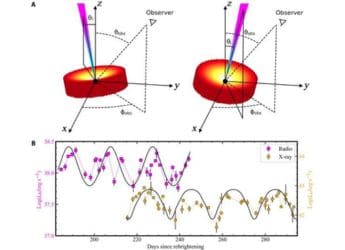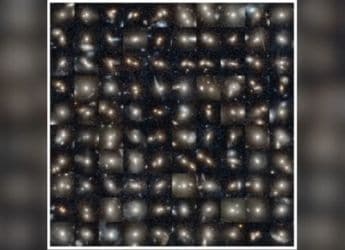- Home
- Science
- Science News
- How AI Could Help Forecast Earthquake Aftershocks
How AI Could Help Forecast Earthquake Aftershocks

Lightning might not strike twice, but earthquakes can. And forecasting where aftershocks will hit might now be a little easier thanks to an assist from artificial intelligence.
Aftershocks can be more destructive than the quakes they follow, making it all the more important for experts to be able to predict them.
But while seismologists have methods to forecast when aftershocks will hit and how strong they will be, there is more uncertainty about how to predict where they will strike.
Hoping to address that, a group of researchers trained a "deep learning" programme with data about tens of thousands of earthquakes and aftershocks to see if they improve predictions.
"The previous baseline for aftershock forecasting has a precision of around three percent across the testing data set. Our neural network approach has a precision of around six percent," said Phoebe DeVries, co-author of the study published in the journal Nature on Thursday.
"This approach is more accurate because it was developed without a strongly held prior belief about where aftershocks ought to occur," DeVries, a post-doctoral fellow at Harvard, told AFP.
The researchers used a type of artificial intelligence known as deep learning, which is loosely modelled on the way the human brain makes connections.
The programme allowed the researchers to map relationships "between the characteristics of a large earthquake -- the shape of the fault, how much did it slip, and how did it stress the earth -- and where aftershocks occurred," said Brendan Meade, professor of earth and planetary science at Harvard, and a study co-author.
The researchers tested the network by holding back a quarter of their data set, and feeding the remaining information into the programme.
They then tested how well the programme predicted the aftershock locations of the 25 percent of cases it hadn't been fed.
They found six percent of the areas the programme identified as high-risk did in fact experience aftershocks, up from three percent using existing methods.
Analysing the research, Gregory Beroza, a professor of geophysics at Stanford University, cautioned it "might be premature to infer... an improved physical understanding of aftershock triggering".
In an article published in Nature alongside the study, he said the research had focused on only one set of changes caused by earthquakes that can affect where aftershocks occur.
"Another reason for caution is that the authors' analysis relies on factors that are fraught with uncertainty," Beroza wrote.
DeVries acknowledged that additional factors affect where aftershocks occur and that there is "much more to be done".
"We definitely agree that this work is a motivating beginning, rather than an ending," she said.
And Beroza said the research had established a "beachhead" for additional study into how artificial intelligence could help forecasting.
"The application of machine-learning methods has the potential to extract meaning from these large and complex sources of information, but we are still in the early stages of this process."
Get your daily dose of tech news, reviews, and insights, in under 80 characters on Gadgets 360 Turbo. Connect with fellow tech lovers on our Forum. Follow us on X, Facebook, WhatsApp, Threads and Google News for instant updates. Catch all the action on our YouTube channel.
Related Stories
- Samsung Galaxy Unpacked 2025
- ChatGPT
- Redmi Note 14 Pro+
- iPhone 16
- Apple Vision Pro
- Oneplus 12
- OnePlus Nord CE 3 Lite 5G
- iPhone 13
- Xiaomi 14 Pro
- Oppo Find N3
- Tecno Spark Go (2023)
- Realme V30
- Best Phones Under 25000
- Samsung Galaxy S24 Series
- Cryptocurrency
- iQoo 12
- Samsung Galaxy S24 Ultra
- Giottus
- Samsung Galaxy Z Flip 5
- Apple 'Scary Fast'
- Housefull 5
- GoPro Hero 12 Black Review
- Invincible Season 2
- JioGlass
- HD Ready TV
- Laptop Under 50000
- Smartwatch Under 10000
- Latest Mobile Phones
- Compare Phones
- Redmi Note 15 5G
- Redmi Note 15 Pro 5G
- Redmi Note 15 Pro+ 5G
- Lava Play Max
- Poco C85 5G
- Honor Magic 8 Lite
- Jolla Phone
- Realme P4x 5G
- Asus ProArt P16
- MacBook Pro 14-inch (M5, 2025)
- OnePlus Pad Go 2
- Poco Pad M1
- Just Corseca Skywatch Pro
- Honor Watch X5
- Acerpure Nitro Z Series 100-inch QLED TV
- Samsung 43 Inch LED Ultra HD (4K) Smart TV (UA43UE81AFULXL)
- Asus ROG Ally
- Nintendo Switch Lite
- Haier 1.6 Ton 5 Star Inverter Split AC (HSU19G-MZAID5BN-INV)
- Haier 1.6 Ton 5 Star Inverter Split AC (HSU19G-MZAIM5BN-INV)

















